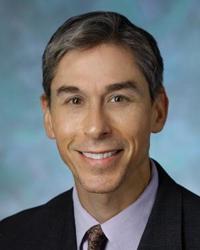
Luis Garza, MD, PhD
Dermatology
- Johns Hopkins School Of Medicine Faculty
4.9 of 5 stars
39 Ratings, 4 Reviews32 Insurances Accepted
View allAbout
Primary Academic Title
CV
Background
Clinical Trials Summary
Recent News Articles and Media Coverage
Additional Academic Titles
Contact for Research Inquiries
Research Interests
Research Summary
Selected Publications
Patents
Memberships
Locations
- Johns Hopkins Outpatient Center
- 601 North Caroline Street, Floor 8, Baltimore, MD 21287
- phone: 410-955-5933
- fax: 410-502-2309
Expertise
Education
University of Michigan Health System
Residency, Dermatology, 2005University of Pennsylvania
Medical Education, MD PhD, 2001Board Certifications
Dermatology
American Board of Dermatology, 2005Insurance
- Aetna
- Amerigroup District of Columbia
- AmeriHealth Caritas District of Columbia
- Beech Street
- Blue Cross Blue Shield Federal Employee Program (FEP)
- CareFirst
- Cigna
- Evernorth Behavioral Health
- First Health
- Geisinger Health Plan
- HealthSmart/Accel
- Humana
- JAI Medical Systems
- Johns Hopkins Health Plans
- Kaiser Permanente
- KeyCare
- Maryland Physicians Care
- Medicaid Maryland
- Medicaid Virginia
- Medicare Maryland
- MedStar Family Choice District of Columbia
- MultiPlan
- Pennsylvania's Preferred Health Networks (PPHN)
- Point Comfort Underwriters
- Private Healthcare Systems (PHCS)
- Provider Partners Advantage HMO SNP Medicare Advantage
- South Central Preferred (SCP)
- Superior Vision
- TRICARE (Humana Military East)
- UnitedHealthcare
- Veteran Affairs Community Care Network (Optum-VACCN)
- Wellpoint (Amerigroup MD)
Reviews
4.9 of 5 stars
39 Ratings, 4 ReviewsThe Patient Rating score is an average of all responses to physician related questions on the national CG-CAHPS Medical Practice patient experience survey through Press Ganey. Responses are measured on a scale of 1 to 5, with 5 being the best score. Comments are also gathered from our CG-CAHPS Medical Practice Survey through Press Ganey and displayed in their entirety. Patients are de-identified for confidentiality and patient privacy.
- 5 out of 5 starsReviewed on 1/21/2024
Excellent
- 5 out of 5 starsReviewed on 1/7/2024
He is a top-notch expert in his specialty and I feel grateful to be seen by him. He is always patient and supportive to me and it gives me faith that there will be a cure.
- 5 out of 5 starsReviewed on 12/10/2023
Doctor Gaza was courteous, professional, listened carefully, answered all my questions, took his time explaining my condition and enlightened me about medications prescribed.
- 5 out of 5 starsReviewed on 9/17/2023
I had a follow up appointment with the dermatologist in ref., to my hair that is growing back fine.
